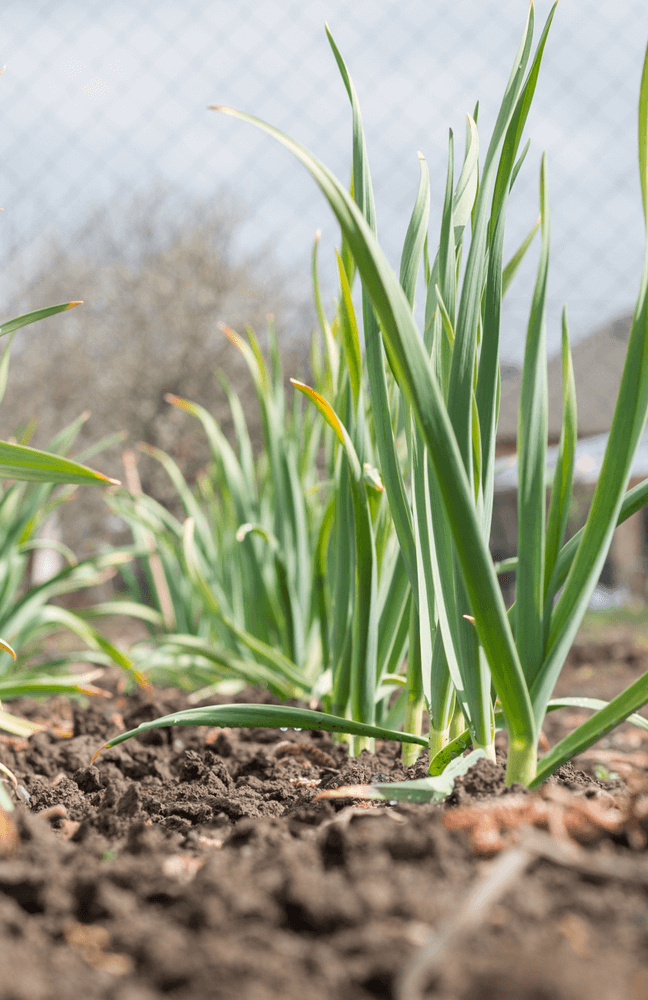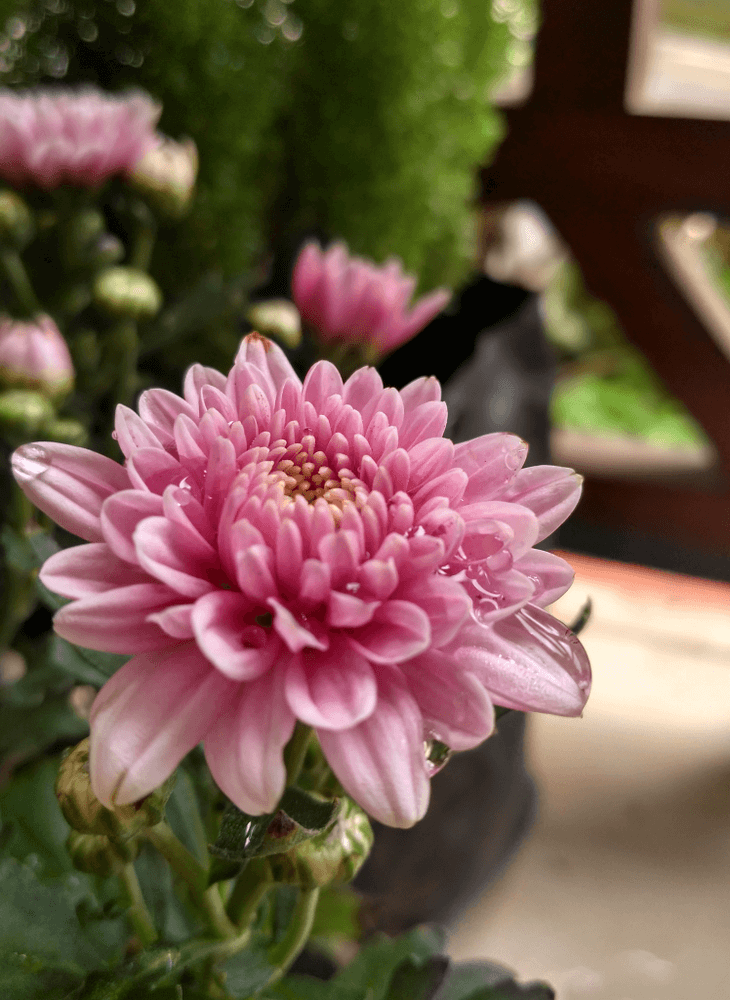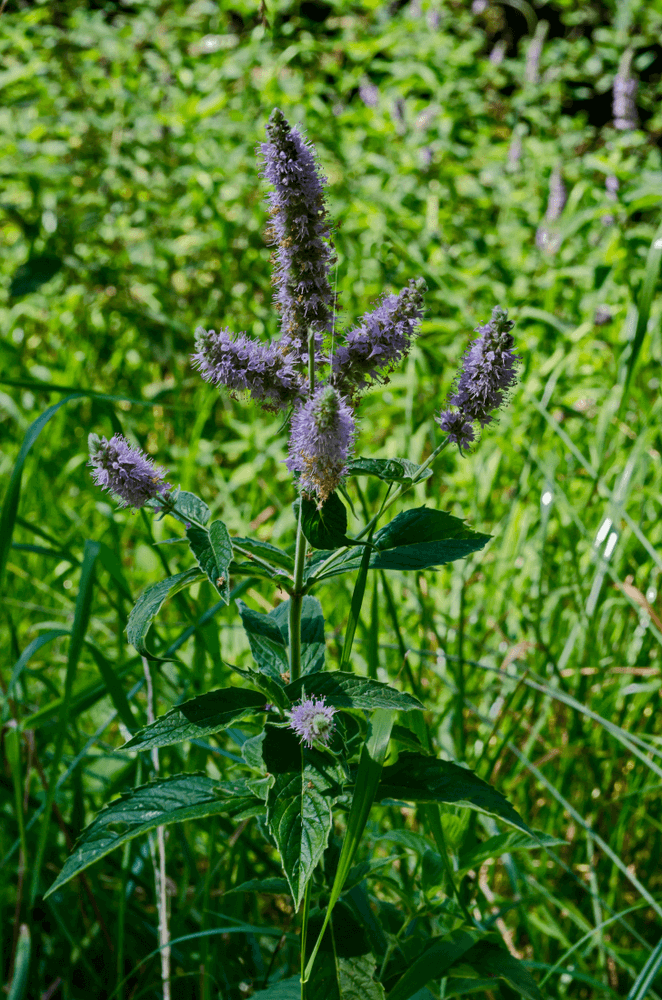Many living organisms depend on plants to live. However, these plants don’t want to be eaten if they can help it. They can’t run away so they use chemicals in order to repel attackers.
They can ward off rodents, insects, and other pests, to protect themselves from consumption. Ergo, if you have a tick problem, get plants that repel ticks. It’s the environment-friendly method of preventing ticks from latching onto you and your skin in an alarming fashion.
Repel Ticks All-Naturally with These 8 Plants

1. Garlic

Garlic, known by the scientific name of Allium sativum, is an all-around insect repellent. It’s even a people repellent too if you eat too much of it and end up with garlic-scented halitosis.
This versatile plant and popular culinary ingredient is easy to plant in any garden. It’s particularly popular in Italian dishes, so it pays to have a free supply of it in your own backyard.
To be clear, ingesting a bit of garlic isn’t enough to get rid of pests. Instead, you should plant the garlic so that its smell is stronger since it’s wafting from the plant itself. If you have ticks in your yard, just plant garlic in several strategic areas. You can also crush garlic cloves in order to make enough juice to repel garden ticks in a snap.
Related: 15 Best Plants That Repel Roaches
2. Catnip

Catnip or Nepeta cataria is an intense-smelling plant. It produces a mellow stone effect when cats take a nip of it. While your cats might love it, the ticks in your property will in contrast loathe it.
Cats specifically love it smell. It’s like marijuana for felines! Its harmless to humans but not to insects. It’s the perfect bug deterrent because it’s a low-growing kind of plant any novice can cultivate on his own.
This plant is characterized by its pretty flowers. It’s reminiscent in appearance to lavender save for the different smell and effects on felines. Its flowers produce an ethereal type of oil that contains nepetalactone.
This substance is intolerable to insects but beloved by cats. It’s an easy-to-grow plant that serves as a safeguard against ticks and other insects. This is why catnip is a regular on these lists.
Related: 20+ Plants That Repel Snakes
3. Rosemary

As for rosemary or Rosmarinus officinalis, it’s a popular kitchen herb. This plant is undemanding to grow in your garden. You can easily cultivate it with enough watering and care.
You can specifically plant it on your balcony in a pot. You can also use it in the kitchen for various culinary delights. It’s also herbal medicine that aids in the healing of wounds.
It’s the smell of rosemary that repels ticks off of your property. It’s just like many other plants on this list. It’s safe for mammals, particularly humans, because it’s pleasantly scented for us.
Insects can’t stand this sweetness of scent. It drives them mad or at least wards them off of your home. Ticks aren’t the only insects rosemary can get rid of though. It also drives mosquitoes and fleas away.
4. Rue

Ticks will rue the day they stepped into your garden as long as you have rue planted in it. It is tick-tock, tick-tock, boom for the ticks.
Rue or Ruta graveolens is an evergreen herb with blue metallic leaves. This insect repellent is also antifungal and antimicrobial. You can use its essences to remove foot fungus or disinfect your hands.
This plant’s scent makes bugs such as ticks and fleas to buzz off of your garden. It’s also the anti-catnip in a way. Cats simply hate how rue smells. If you have a stray cat problem then plant rue in your garden. You will be safe from the risk of rabies and expensive shots for sure. Plant this instead of catnip to keep ticks and cats away. You get to kill two “birds” with one “stone”.
Related: 10 Plants That Repel Flies Naturally and Keep the Home Bug-Free
5. Wormwood

Wormwood, also known as absinthe or Artemsia absinthium, is a bitter herb. It’s used medicinally and as a flavored drink. You can make tea out of this plant too. It’s famously known as absinthe.
Most importantly, it’s an effective insect-warding plant. It can repel ticks as well as fleas and other bugs. Its shrub has yellow flowers and the plant itself can grow up to 3-feet high.
You can keep ticks from latching onto you by rubbing its freshly picked leaves over clothing. You can also rub it along your arms for mosquito protection. Its scent will repel such insects in a jiffy.
The resin is toxic enough to serve as insecticide given enough of it is used. It’s the safer alternative to DEET or bee-killing insecticide. It can also be bundled up for placement in doorways and closets.
Related: Natural Flea Repellents: 17 Plants That Repel Fleas
6. Chrysanthemum

Chrysanthemums aren’t just plants that repel ticks. They can serve as a wonderful addition to your garden. Both hobbyist gardeners and erstwhile homeowners alike love to cultivate the plant for balconies and garden plots. It’s famous for its pretty flowers and it’s a welcome addition to many a flower bed. It’s a breed that belongs to the daisy family of plants.
This daisy has been bred over the years to produce a variegated number of flower colors. There are many varieties of chrysanthemums out there, each producing different color flowers.
Aside from its flowers, these daisies are effective tick repellents. It gets those insects out of your property in the blink of an eye. It doesn’t only get rid of ticks but also moths, fleas, and other bugs from your yard.
Related: Top 7 Incredible Plants that Repel Ants
7. Pennyroyal (squaw mint)

The natural insect repellent known as pennyroyal is related to the mint family. Minty menthol irritates insects something fierce. Pennyroyal is particularly favored for its ability to grow and spread rapidly. Just plant in your garden and voila. You now have an all-natural and organic insect repellent plant.
Unwanted pests beware when it comes to pennyroyal’s minty freshness. Alternatives to pennyroyal include mints from the mint family like citrus mints, sweet mints, spearmints, and peppermints. Pennyroyal has a separate entry from all of them because of its ability to reduce tick numbers. It can even double as a mosquito-repelling plant for good measure.
Related: Top 7 Plants That Repel Spiders
8. Eucalyptus (Gum Tree)

Speaking of heady scents, what about the eucalyptus tree? Eucalyptus oil is known for its refreshing feeling once in contact with your skin too. The plant is famous for its health benefits and silver-dollar foliage.
Can it also serve as a tick remover and repellent? Of course it can. It’s good for healing and skincare but dangerous against bugs like ticks or flies.
The plant and its oil have been registered as miticide and insecticide in 1948. So on top of household ailment treatment, planting eucalyptus can also help with your tick infestations. Protect yourself from these bloodsuckers with this handy plant. Some species can reach up to 130 feet high so choose the potted variety instead.
Related: 17 Best Plants That Repel Wasps And Bees
The Bottom Line

Ticks are hard to remove when they latch unto your skin. They can be as small as poppy seeds but hurt like cactus thorns. These vampire bugs hold unto you like briar patches. If you’re not careful, removing them can leave pieces of them unto your skin.
They can even carry diseases. You need sharp tweezers and rubbing alcohol to safely remove them. You can also use soap and water in a pinch. Avoid dealing with tick removal by planting the above mentioned plants. They can serve as tick repellents that are all-natural and safe for the environment.


